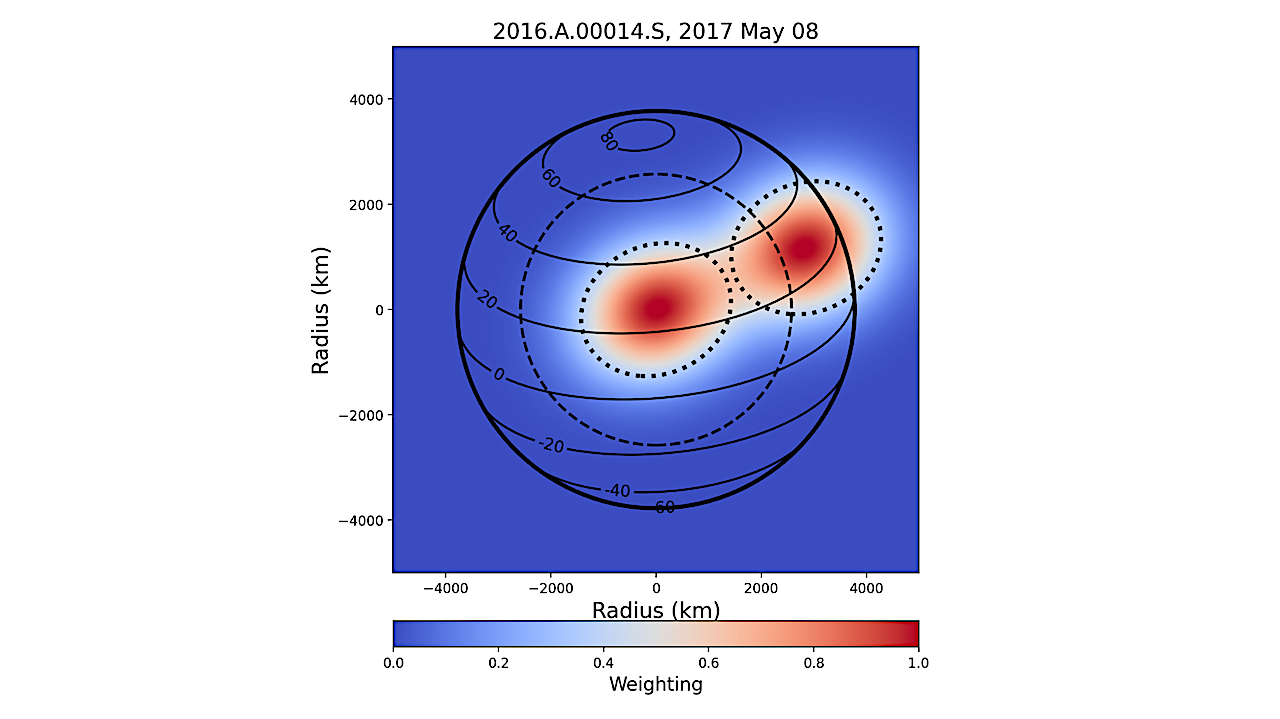Variability in Titan’s Mesospheric HCN and Temperature Structure as Observed by ALMA


The temperature structure of Titan’s upper atmosphere exhibits large variability resulting from numerous spatially and temporally irregular external energy sources, seasonal changes, and the influence of molecular species produced via photochemistry.
In particular, Titan’s relatively abundant HCN is thought to provide substantial cooling to the upper atmosphere through rotational emission, balancing UV/EUV heating and thermal conduction. Here, we present the analysis of ALMA observations of Titan from 2012, 2014, 2015, and 2017, corresponding to planetocentric solar longitudes of ~34-89∘, including vertical HCN and temperature profiles retrieved from the lower mesosphere through the thermosphere (~350-1200 km; 3×10−2-2×10−8 mbar). Throughout the atmosphere, temperature profiles differ by 10 to 30 K between observations approximately one Earth year apart, particularly from 600-900 km.
We find evidence for a large imbalance in Titan’s upper atmospheric energy budget between 2014 and 2015, where the mesospheric thermal structure changes significantly and marks the transition between a mesopause located at ~600 km (2×10−4 mbar) and at ~800 km (3×10−6 mbar). The retrieved HCN abundances vary dramatically during the 2012 to 2017 time period as well, showing close to 2 orders of magnitude difference in abundance at 1000 km. However, the change in HCN abundance does not appear to fully account for the variation in mesospheric temperatures over the LS∼34-89∘ period.
These measurements provide additional insight into the variability of Titan’s mesospheric composition and thermal structure following its 2009 vernal equinox, and motivate continued investigation of the origins of such rapid changes in Titan’s atmosphere throughout its seasonal cycle.
A. E. Thelen, C. A. Nixon, R. Cosentino, M. A. Cordiner, N. A. Teanby, C. E. Newman, P. G.J. Irwin, S. B. Charnley
Comments: Published in the Planetary Science Journal. 25 pages, 11 figures, 1 table
Subjects: Earth and Planetary Astrophysics (astro-ph.EP); Atmospheric and Oceanic Physics (physics.ao-ph)
Cite as: arXiv:2402.01957 [astro-ph.EP] (or arXiv:2402.01957v1 [astro-ph.EP] for this version)
Related DOI:
https://doi.org/10.3847/PSJ/ac7050
Focus to learn more
Submission history
From: Alexander Thelen
[v1] Fri, 2 Feb 2024 23:33:49 UTC (1,034 KB)
https://arxiv.org/abs/2402.01957
Astrobiology
